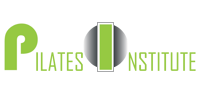Top 5 Myths About Pilates
Top 5 Myths About Pilates
By Marguerite Ogle, About.com Guide
Updated September 14, 2012
The increasing popularity of Pilates is a wonderful thing, but like the game Telephone where the meaning of a phrase gets distorted as it is passed along, as word spreads about Pilates, so have some ideas about it that aren’t serving anybody. Here a few of the myths about Pilates that can send Pilates folks into mild hysteria, if not full on conniptions.
Myth 1. Pilates is a derivative of yoga.
Ah, this one is causing a gnashing of teeth for both Pilates and yoga practitioners, especially teachers who have students come in thinking that yoga and Pilates are interchangeable. Pilates is not a derivative of yoga. While Joseph Pilates studied many fitness and body/mind disciplines, and may have been exposed to yoga, there is actually no historical evidence that he studied yoga seriously. While Pilates and yoga are very complimentary practices, they are also very different.
Myth 2. Pilates is just a quick fix for flabby abs.
Well, the truth in this one is that Pilates is a fix for flabby abs. Pilates is well-known for flattening tummys. The reason is that Pilates does focus on working from the core, especially the deeper abdominal muscles. Toning the abdominal and pelvic floor muscles provides stability and freedom of motion throughout the body. This is also one of the reasons that Pilates has been so successful for people who have back pain.
However, Pilates does not stop at abdominal work at all. Structural integration, and learning to create a flexible, strong body that can move freely and efficiently are important goals of Pilates fitness. To this end, Pilates works all body parts in a very balanced way, not just the abs..
The Pilates method is also a practice of mind/body fitness. Developing a body that works as a harmonious whole requires much more than a calisthenic or spot reduction approach to fitness. The Pilates principles – control, centering, concentration, breath, flow, and precision all support an integrative mind/body experience through Pilates exercise.
Myth 3. Pilates is easy, for wimps.
Hold it while I count to 10, do my breathing exercises, and visualize peace! I’ve been hearing this easy Pilates rumor around lately and it just about sends me into orbit.
I think the idea that Pilates is easy comes from a few places. First, Pilates is very adaptable. It can be easy or very hard, depending on the needs of the individual. The ability to modify exercises for different populations is actually one of the greatest strengths of Pilates. Second, the soaring popularity of Pilates has meant that there are many beginner Pilates classes in practically every gym and studio around the country. This is a good thing, but it also means that people are not necessarily exposed to the intermediate and advanced levels of Pilates. Third, Pilates exercises are often done slowly. There is an emphasis on awareness and control that can make an exercise look easy to the casual observer.
I can think of other reasons that Pilates might seem to be easy. It is a popular form of exercise for pregnant women, it is used in rehabilitation, and people of all ages and sizes can do Pilates. Nevertheless, I assure you that the Pilates method presents ongoing challenges for even the fittest athletes (with whom Pilates is also very popular).
Myth 4. Pilates is mostly for women
Pilates has never been “just for women” and its benefits are certainly not gender biased. After all, Pilates was developed by a man, Joseph Pilates, who is said to have been a rather macho man at that. Joe was a gymnast, a boxer, and a military trainer in his early years, and pictures of Pilates even into his eighties, reveal a very strong, fit physique. Men have always played an important role in maintaining the Pilates work and shaping its evolution. Teachers like Ron Fletcher, who studied directly with Joseph Pilates, and Rael Isakowitz are among the most visible today.
It is true that Pilates is very popular with women, but there is nothing about Pilates that makes it more for women than for men. The adaptability of the Pilates method to different levels of fitness and body types has made Pilates an accessible and effective fitness choice for women. Also, Pilates has attracted a large number of dancers, especially women, and many of them have chosen Pilates as a next career. More women teachers has made Pilates more attractive to women students. Both of these factors may have contributed to a somewhat feminized perception of Pilates. Fortunately, now that the Pilates method is becoming so well accepted in fitness, more men are showing up in studios and training programs.
Myth 5. Anyone can teach Pilates with a little book and DVD study, or a short workshop.
There is an unfortunate truth in this. Pilates instruction is not regulated at the moment and anybody who wants to can claim to be teaching Pilates. But that’s as far as it goes. Pilates is a sophisticated method of exercise and a qualified instructor will have had a lot of education and apprentice experience.
The certification to teach Pilates mat exercises is often just a weekend course, but this should be preceded by extensive time spent as a student. Full Pilates certification is much more extensive, requiring the study of anatomy, special populations, teaching skills, and all of the Pilates equipment and mat exercises. Most Pilates instructors have good training, but since the industry is not regulated it is up to the consumer to ask questions and be a discerning student, and the responsibility of prospective instructors to be sure that they have adequate education before teaching a class.
